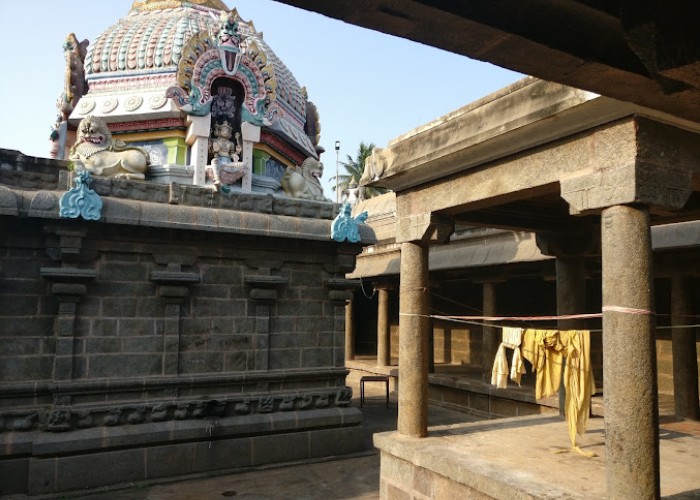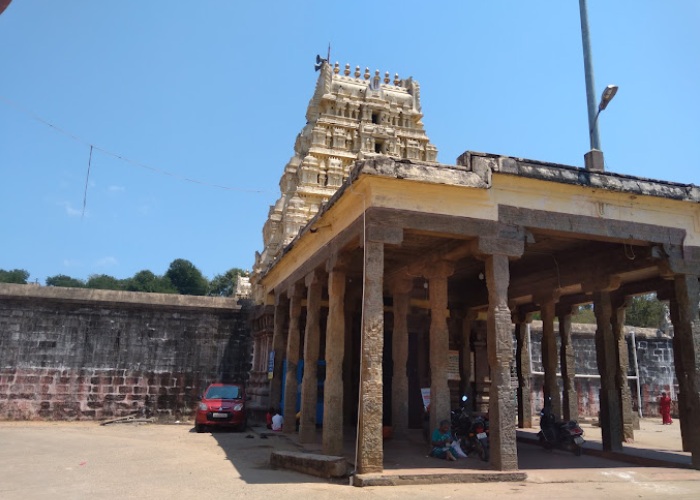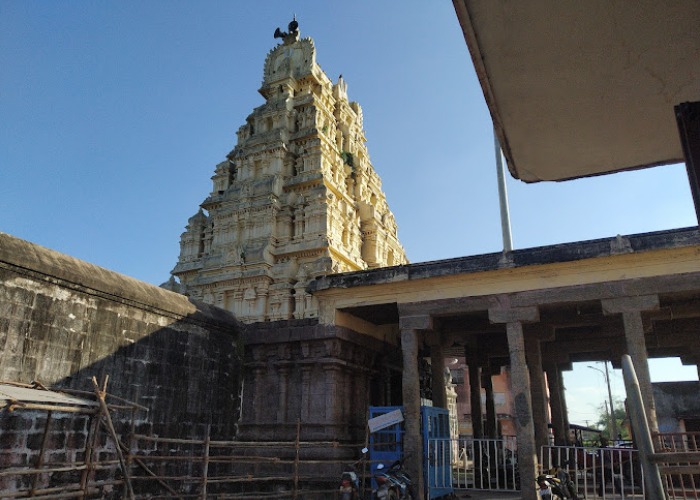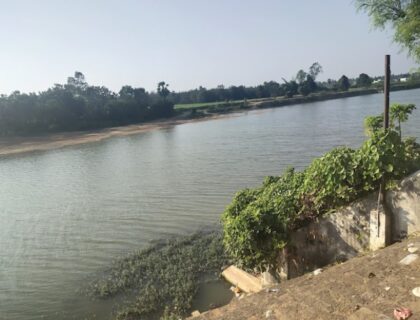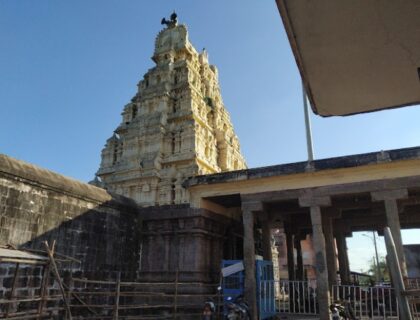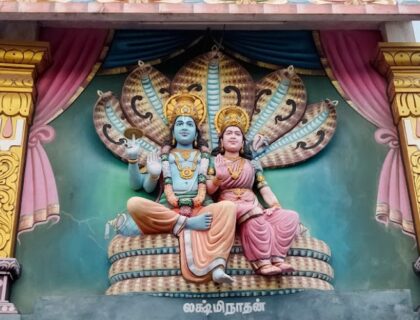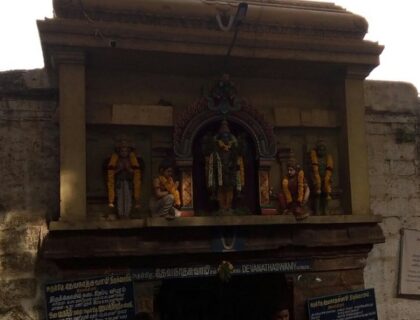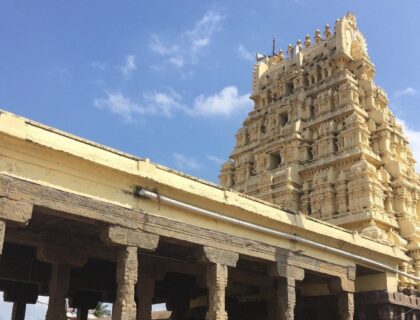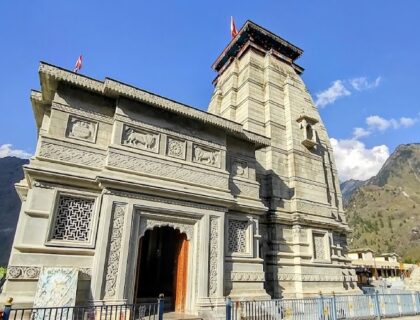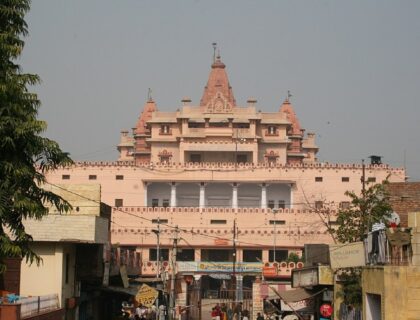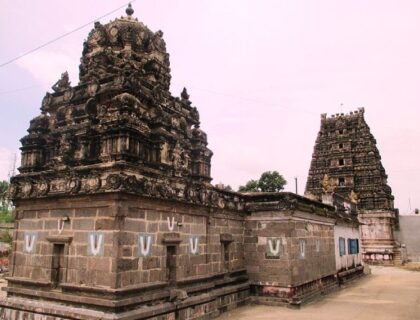Devanathaswamy Temple Thiruvanthipuram
Devanathaswamy Temple also known as Thiruvanthipuram temple is a well-known Vishnu temple which is located in the town of Thiruvanthipuram, near Cuddalore. Lord Vishnu is worshipped as Devanathaswamy, while his consort Lakshmi is adored as Hemabhujavalli.
The temple is famous for Lord Hayagriva, the horse-faced incarnation of Vishnu, and it is the only historical temple in South India with a shrine dedicated to him. Devanathaswamy is said to have appeared in this shrine for Adisesha, sage Markandeya, and Indra’s cause.
Story/Legend of the Devanathaswamy Temple
The Devanathaswamy Temple is thought to be quite old and is mentioned in various scriptures, including the Brahmanda Purana, the Naradiya Purana, and the Skanda Purana. Legend has it that certain sages travelled to Thiruparkadal, the ocean of milk, to worship Lord Vishnu. They went to Vaikunta, the sacred home of Vishnu because the Lord was not present.
They discovered that the Lord could only be seen near the shoreline in this area, so they went hunting for him in every location near the seashore. The sages discovered Sage Markandeya and his daughter Bhudevi conducting penance there. And Lord Vishnu is claimed to have come there in his magnificent avatar, complete with conch shell, chakra, and weapons.

According to another legend, Lord Vishnu was once assigned the responsibility of bringing pure water from a body of water known as Vraja Theertha to Garuda, his bird mount. Garuda arrived in the netherworld and took the water without the consent of the sage who had created the lake. Angered at Garuda’s actions, the sage cursed the water to become unclean. While Garuda was attempting to pacify the sage by explaining the objective of his mission, Adisesha, on the orders of Vishnu, made a well by whipping his tail on the earth. Even now, this well water is revered and used for religious purposes. This temple is considered one of the 108 Divya Desams.
What is Divya Desams– A Divya Desam or Vaishnava Divya Desam is one of the 108 Vishnu and Lakshmi temples recorded by the Alvars, the poet-saints of the Sri Vaishnava faith. 105 of the 108 temples are in India, one is in Nepal, and the final two are thought to be in space, in Tirupparkatal and Vaikuntham. They are distributed over the Indian states of Tamil Nadu (84), Kerala (11), Andhra Pradesh (2), Gujarat (1), Uttar Pradesh (4), and Uttarakhand (3). Muktinath, Saligramam is Nepal’s sole Divya Desam. The 12 Alvars respect the Divya Desams in the Naalayira Divya Prabandham, a collection of 4,000 Tamil hymns.
History of Devanathaswamy Temple
The existing temple is thought to have been established during the Mediaeval Cholas, with further development from the Pandyas, Hoysala Empire, and Vijayanagara Empire. Kulothunga Chola I (1070-1120), Vikrama Chola (1118-1135), Rajaraja Chola III (1216-1256), Jatavarman Sundara Pandyan (1251-1268), Vikrama Pandya, Vira Pandya III, Vijayanagar ruler Achyuta Deva Raya (1529-1542 CE), and Koperunjinga all have inscriptions in the temple.
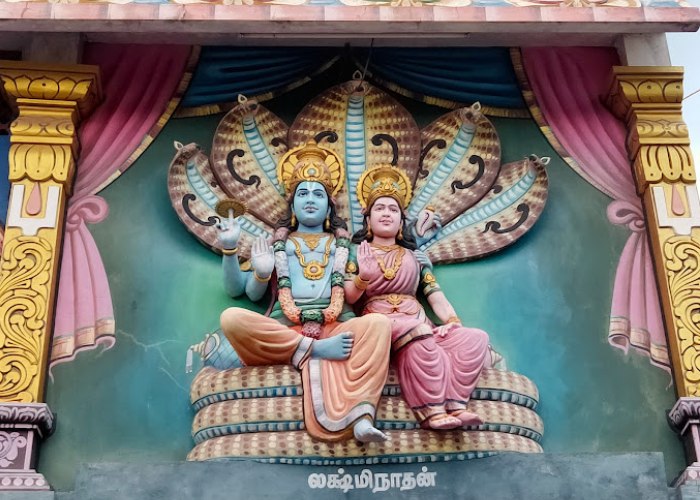
The architecture of Devanathaswamy Temple
The Devanathaswamy Temple is located in the foothills of Outshadagiri, a small hill that houses the Hayagriva temple. The river Kedilam, which flows from south to north and is known locally as Uttaravahini, is located on the other side of the temple. The Dravidian-style temple is the only Vishnu temple on the river’s banks, while there are a few famous Shiva temples.
The temple is surrounded by a granite wall, which encloses all of its shrines and bodies of water. The temples face east, but the raja gopuram, or gateway tower, is positioned on the western entrance and has five levels, rising to a height of 60 feet (18 metres). The central shrine houses the image of the presiding deity, Devanathaswamy.
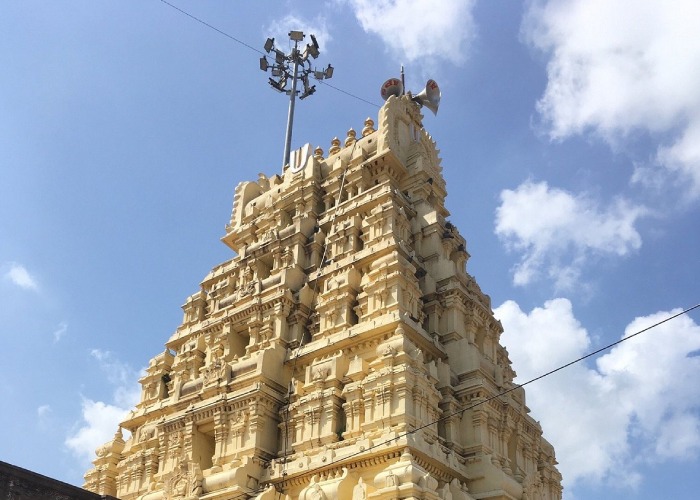
The sanctum also includes a sitting image of the consort, Senkamalavalli Thayar (also known as Hemabhujavalli, Vaikunta Nayagi, and Amruthavarshini). The sanctum houses the festival representations of Vishnu, known by several names such as Moovaraghia oruvan, Achuta, Dvistantha, Devanatha, Vibhuthanatha, and Dasyatha. Other deities represented in the temple are Pallikonda Perumal, Andal, AdiKesava Perumal, Alvars, Hanumar, and Garuda.

Despite the fact that the presiding deity is Devanathaswamy, the temple is best known for Hayagriva, Vishnu’s horse-faced avatar. The images of Garuda and Hanuman are presented in Anajalihasta’s distinctive postures, which differ from all other temples. The temple is the only historical temple in South India with a Hayagriva shrine.
Facts about Devanathaswamy Temple
- Devanathaswamy Temple is located in the town of Thiruvananthapuram, near Cuddalore and is also known as the Thiruvananthapuram temple.
- Though Devanathaswamy is the main deity, the temple is best renowned for Hayagriva, the horse-faced incarnation of Vishnu and a god of knowledge.
- The temple is the only historical temple in South India with a Hayagriva sanctuary on the mountaintop.
- The Devanathaswamy Temple is classified as a Divya Desam, one of the 108 Vishnu temples that are mentioned in the book.
- The temple is revered in Nalayira Divya Prabandham, the 7th–9th century Vaishnava canon, by Thirumangai Alvar in eleven hymns.
- A granite wall surrounds the temple, enclosing all its shrines and bodies of water. The rajagopuram, the temple’s gateway tower has five tiers and raises to a height of 60 ft (18 m).
- The Devanathaswamy Temple in its current form is believed to have been built during the Medieval Cholas, with later expansion from Pandyas, Hoysala Empire and Vijayanagara Empire.
- Originally, the location was thought to have held a Shiva temple. A Saiva fanatic Chola emperor planned to demolish the Vishnu temple in his territory.
- He was taken aback when he saw the images of Vinayagar and Dakshinamurthy, which are normally found in Shiva temples.
- Vishnu himself is said to have appeared before the king to recognise the oneness of the god.
- According to tradition, the presiding god wields a lotus, the symbol of Brahma, and has a third eye like Shiva, signifying oneness.
- Tiruvaheendrapuram was named after Adisesha, who was formerly known as Vaheendran.
- Vaheendra is said to have appeased Indra, the lord of the celestial deities. With the passage of time, Tiruvaheendrapuram became Thiruvananthapuram.
Famous Festivals In Devanathaswamy Temple
- Brahmmotsavam is the major festival celebrated in the temple.
- Chitra Poornima is also a major occasion for celebration in the temple.
- Vaikuntha Ekadashi – Vaikuntha Ekadashi celebrated during the Tamil month of Margazhi (December–January) is the major festival celebrated in the temple.
How to reach Devanathaswamy Temple
Devanathaswamy Temple is situated in Thiruvananthapuram, near Cuddalore.
By Air: The nearest airport is in Pondicherry, which is about 30 kilometres from the temple.
By Railway: The nearest railway station is Cuddalore, which is close by.
By Roadways: Regular buses connect the shrine to many places, and they have a good frequency too.
Also Read – Ulagalantha Perumal Temple
Support Us
If our content helps you even 1% in gaining information about the temple, please support us by contributing any amount, our UPI ID is - q417999792@ybl Or pay using QR CODE >>> Click Now

